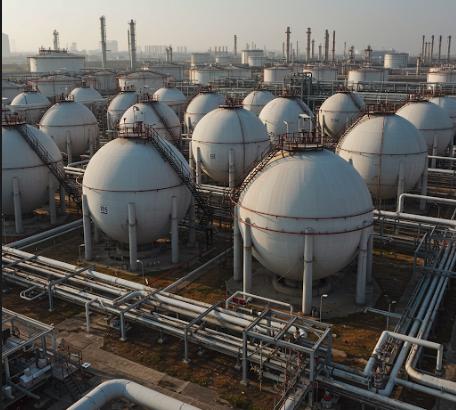Compressed Natural Gas
 Compressed natural gas, abbreviated as CNG, is natural gas primarily composed of methane (\(CH_4\)) that has been compressed to less than 1% of its volume at standard atmospheric pressure. CNG is used as a cleaner alternative to gasoline, diesel, and propane for fueling vehicles, as well as for industrial and household energy needs. The compression of natural gas for CNG typically requires it to be stored at high pressures, around 200–250 bar (2,900–3,600 psi), in specially designed, high-strength containers to ensure safe and efficient use.
Compressed natural gas, abbreviated as CNG, is natural gas primarily composed of methane (\(CH_4\)) that has been compressed to less than 1% of its volume at standard atmospheric pressure. CNG is used as a cleaner alternative to gasoline, diesel, and propane for fueling vehicles, as well as for industrial and household energy needs. The compression of natural gas for CNG typically requires it to be stored at high pressures, around 200–250 bar (2,900–3,600 psi), in specially designed, high-strength containers to ensure safe and efficient use.
Key Points About of CNG
Environmental Benefits - CNG produces fewer pollutants and greenhouse gases compared to traditional fossil fuels, making it an eco-friendly option.
High Efficiency - Vehicles running on CNG are known to be more fuel-efficient, and they generate less engine wear because CNG burns cleaner than gasoline or diesel.
Cost-Effectiveness - It is often cheaper than gasoline or diesel, providing a more economical solution for both companies and individual users.
Safety - CNG is lighter than air, so it disperses quickly in case of a leak, reducing the risk of fire or explosion compared to liquid fuels.
Compressed Natural Gas is Primarily Composed of the Following Elements
Methane (\(CH_4\)) - Typically 90-98% of CNG, the main component.
Ethane (\(C_2H_6\)) - Small amounts, usually 1-6%.
Propane (\(C_3H_8\)) - Trace amounts, less than 1%.
Butane (\(C_4H_{10}\)) - Trace amounts, less than 1%.
Carbon Dioxide (\(CO_2\)) - Minor component, usually less than 1%.
Nitrogen (\(N_2\)) - Trace amounts, varying by source.
Hydrogen Sulfide (\(H_2S\)) - very small amounts (removed during processing)
Water Vapor - typically removed before compression
Other hydrocarbons and impurities - Minimal, often less than 1%, depending on the gas source and processing.

